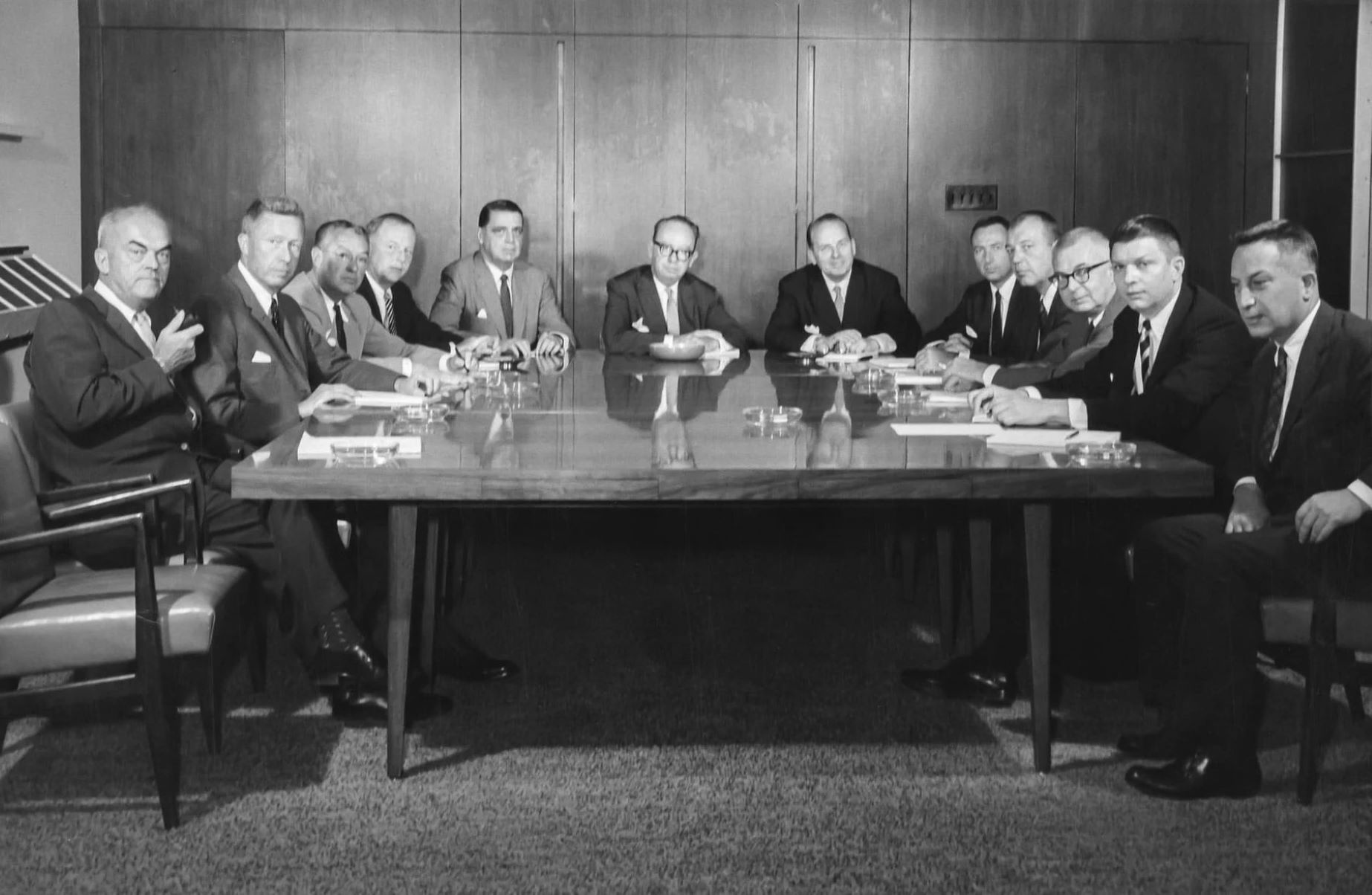
Ever wondered what life was like for the real Mad Men of the 1960s? These advertising wizards shaped the world of marketing with their groundbreaking ideas and bold strategies. Mad Men weren't just characters on a TV show; they were real people who revolutionized the advertising industry. From their swanky offices on Madison Avenue to their high-stakes client meetings, these ad execs lived in a world of creativity, pressure, and glamour. But what were they really like? Were their lives as dramatic and intriguing as depicted on screen? Let's dive into 35 fascinating facts about the real Mad Men and uncover the truth behind the legends.
Key Takeaways:
- The Birth of Advertising Agencies Advertising agencies have a fascinating history dating back to the 19th century. They evolved from simply placing ads to creating iconic campaigns, shaping consumer culture and brand identity.
- The Evolution of Media Advertising has transformed with the media landscape, from print to digital. It has adapted to radio, television, internet, and social media, revolutionizing how ads are created, targeted, and consumed.
The Birth of Advertising Agencies
Advertising agencies have a rich history that dates back to the 19th century. These agencies were the masterminds behind some of the most iconic campaigns.
- The first advertising agency, Volney B. Palmer, was established in Philadelphia in 1841.
- By the 1860s, agencies began to offer creative services, not just ad placements.
- J. Walter Thompson is credited with creating the first modern advertising agency in 1864.
- The term "Mad Men" refers to the advertising executives of Madison Avenue in New York City.
Iconic Campaigns and Slogans
Some advertising campaigns have become legendary, shaping consumer culture and brand identity.
- The "I Love New York" campaign, launched in 1977, boosted tourism and became an iconic slogan.
- Coca-Cola's "I'd Like to Buy the World a Coke" commercial from 1971 is one of the most famous ads ever.
- Nike's "Just Do It" slogan, introduced in 1988, revolutionized sports marketing.
- The Marlboro Man campaign, started in 1954, turned Marlboro into the world's best-selling cigarette brand.
The Creative Geniuses
Behind every great campaign, there were creative minds who pushed the boundaries of advertising.
- David Ogilvy, often called the "Father of Advertising," founded Ogilvy & Mather in 1948.
- Bill Bernbach co-founded Doyle Dane Bernbach (DDB) and created the famous Volkswagen "Think Small" campaign.
- Mary Wells Lawrence was the first woman to head a major agency, Wells Rich Greene, in 1966.
- Leo Burnett, known for creating brand mascots like Tony the Tiger and the Jolly Green Giant, founded his agency in 1935.
The Evolution of Media
Advertising has evolved with the media landscape, from print to digital.
- The first radio commercial aired in 1922 for the Queensboro Corporation.
- Television advertising began in 1941 with a Bulova watch commercial.
- The internet revolutionized advertising in the 1990s, with the first banner ad appearing in 1994.
- Social media platforms like Facebook and Instagram have become major advertising channels in the 21st century.
Controversial Moments
Advertising has not been without its controversies, sparking debates and sometimes backlash.
- The 1984 Apple Macintosh ad, directed by Ridley Scott, was both groundbreaking and controversial.
- Pepsi's 2017 ad featuring Kendall Jenner was pulled after accusations of trivializing social justice movements.
- The 1995 Calvin Klein ads were criticized for their provocative imagery.
- Dove's "Real Beauty" campaign faced backlash for its portrayal of body diversity.
The Impact on Society
Advertising has had a profound impact on culture, consumer behavior, and even social norms.
- The "Diamonds are Forever" campaign by De Beers in 1947 popularized diamond engagement rings.
- The "Got Milk?" campaign, launched in 1993, significantly increased milk consumption in the U.S.
- Political advertising has influenced elections, with the first TV political ad airing in 1952.
- Public service announcements (PSAs) have raised awareness on issues like smoking, drunk driving, and AIDS.
The Rise of Digital Advertising
The digital age has transformed how ads are created, targeted, and consumed.
- Google AdWords, launched in 2000, revolutionized online advertising with pay-per-click ads.
- Programmatic advertising uses algorithms to automate ad buying, making it more efficient.
- Influencer marketing has become a key strategy, with brands partnering with social media influencers.
- Native advertising blends ads with content, making them less intrusive and more engaging.
The Future of Advertising
As technology advances, the future of advertising looks both exciting and unpredictable.
- Artificial intelligence (AI) is being used to create personalized ad experiences.
- Virtual reality (VR) and augmented reality (AR) offer immersive advertising opportunities.
- Blockchain technology promises to increase transparency and reduce ad fraud.
- Voice search and smart speakers are creating new avenues for advertising.
Fun Facts About Mad Men
The term "Mad Men" has become synonymous with the golden age of advertising, thanks to the popular TV show.
- The show "Mad Men" was set in the 1960s, a pivotal decade for advertising.
- Don Draper, the show's main character, was inspired by real-life ad executives like Draper Daniels.
- "Mad Men" won 16 Emmy Awards and 5 Golden Globes during its run from 2007 to 2015.
The Legacy of Real Mad Men
Real Mad Men left a lasting impact on advertising. Their creativity and boldness transformed the industry. They didn't just sell products; they sold ideas and dreams. These pioneers pushed boundaries, creating iconic campaigns that still influence advertising today. Their work wasn't just about catchy slogans or flashy visuals. It was about understanding people, tapping into emotions, and crafting messages that resonated deeply.
Their legacy lives on in modern advertising. Techniques they pioneered are still in use, proving their timeless relevance. From memorable taglines to groundbreaking strategies, their influence is undeniable. They showed that advertising could be both an art and a science, blending creativity with data-driven insights.
Real Mad Men set the stage for future generations. Their innovative spirit continues to inspire advertisers, reminding us that great ideas can change the world. Their story is a testament to the power of creativity and vision.
Frequently Asked Questions
Was this page helpful?
Our commitment to delivering trustworthy and engaging content is at the heart of what we do. Each fact on our site is contributed by real users like you, bringing a wealth of diverse insights and information. To ensure the highest standards of accuracy and reliability, our dedicated editors meticulously review each submission. This process guarantees that the facts we share are not only fascinating but also credible. Trust in our commitment to quality and authenticity as you explore and learn with us.


